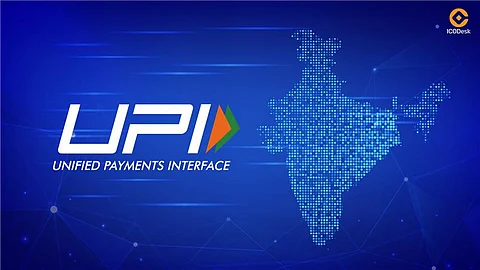

With this explosive growth in transactions, India has established itself as a world leader in real-time digital payments, underpinned by the Unified Payments Interface (UPI). A new IMF fintech note, titled "Growing Retail Digital Payments: The Value of Interoperability," highlights a significant milestone in digital transactions.
According to the report, UPI processes an impressive 18-18.4 billion transactions every month. This staggering volume solidifies India's position as a global leader in fast payments.
An increase of approximately 32% year-over-year was recorded in June 2025 alone, with ₹24.03 lakh crore being transacted through UPI-enabled channels, compared to around 13.9 billion transactions in June 2024. The system connects 491 million users, 65 million merchants, and 675 banks on a single platform.
According to the IMF, UPI has succeeded precisely because of its open and interoperable design, which allows users of one UPI-based app (such as Google Pay, PhonePe, BHIM, etc.) to transact seamlessly across different banks or platforms.
Such an open-framework architecture has not only brought about higher convenience and competition. Still, it has also accelerated a move away from cash, with ATM withdrawals declining in areas where UPI adoption is the highest.
Indeed, UPI constitutes nearly 85% of all digital transactions in India and approximately 50% in real-time digital payments worldwide. Starting in 2018, the number of daily transactions through UPI has surpassed the count recorded through Visa.
Currently, UPI records more than 650 million transactions every subsequent day, as testified to by government and industry sources. The impact of UPI does not stop at its domestic use, however. Several countries have seen the active adoption of UPI, with its maiden adoption in Europe.
India is currently lobbying the BRICS to recognize UPI as a common standard, thereby facilitating the further standardization of cross-border flows and reducing the costs of remittances.
A systemic transformation has paved the way for UPI's success. This transformation began with the launch of interoperable banking and inclusion schemes, such as the Jan Dhan and Aadhaar initiatives. The rollout of high-speed telecom services further accelerated this transformation. As a result, the groundwork was laid for UPI to emerge as the world's foremost digital public infrastructure.
Can one imagine UPI sustaining momentum in the future without the proper policy calibration? On the Indian Payments Council and fintech side, they are discussing the potential introduction of a tiny MDR, say about 0.2–0.3%, for the big merchants, so there can be investment flows generated to keep the platform resilient - a matter still under review from the regulatory side.
In brief, UPI has become the most widely used real-time payment system worldwide. It has thus evolved into a dynamic force in India’s financial ecosystem and garnered significant global attention - all within just under 10 years since its inception in 2016.
Interoperability, cost efficiency, and fast cross-border mechanism are signs of glimmering sparks that might light up the path to a digital and inclusive global economy.